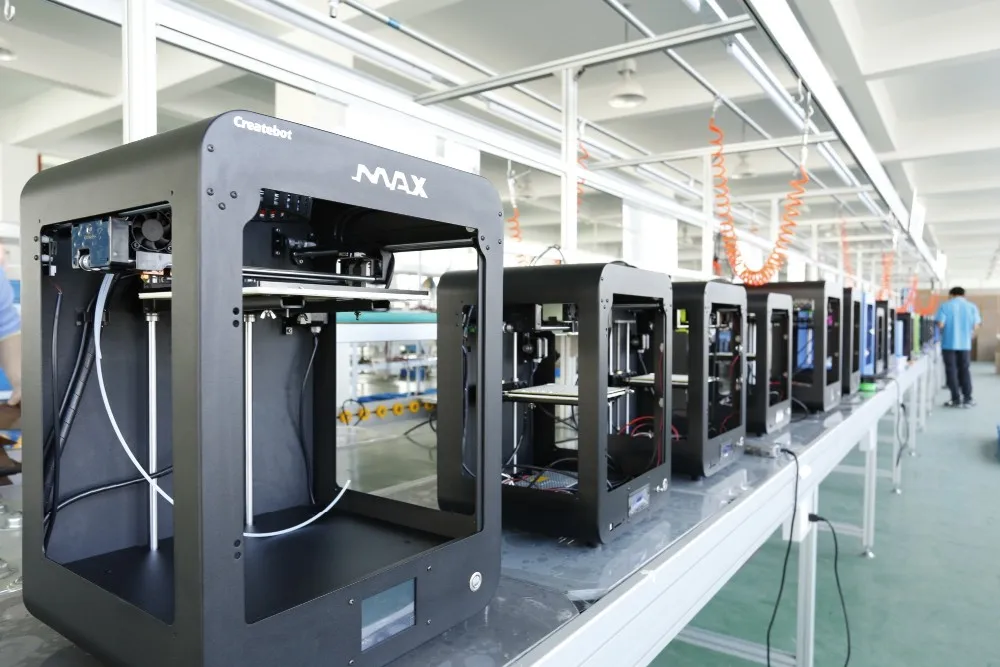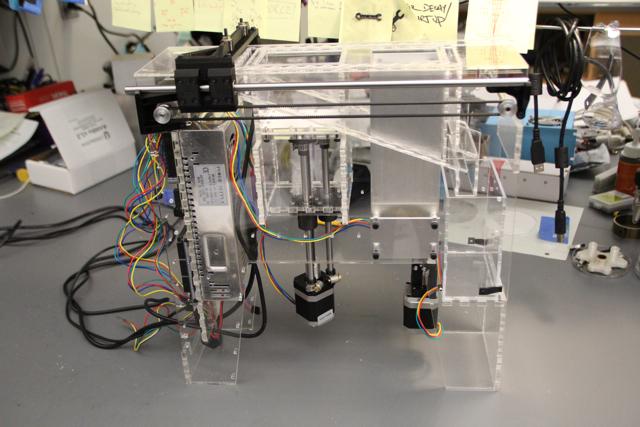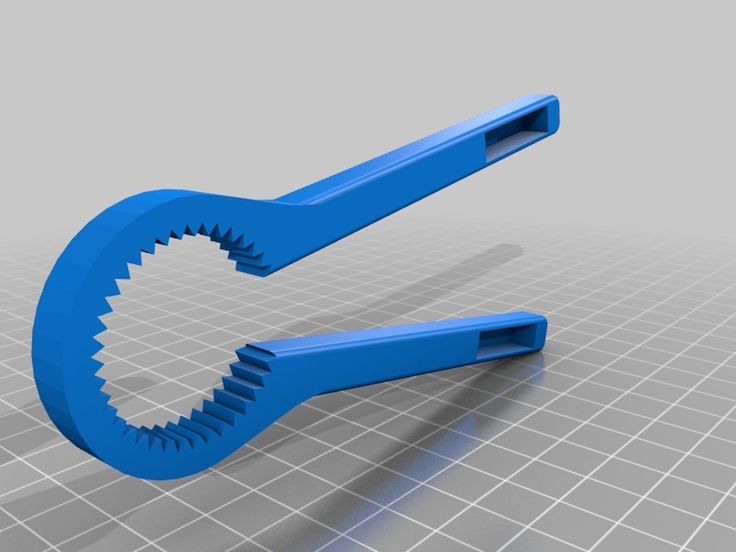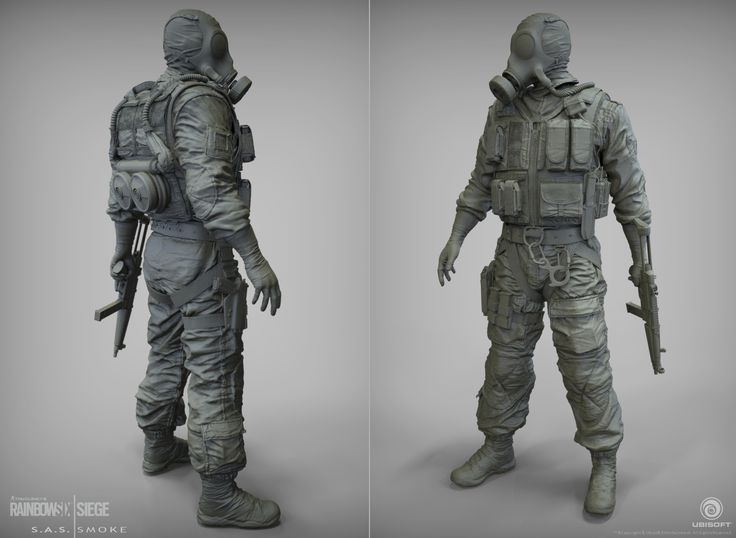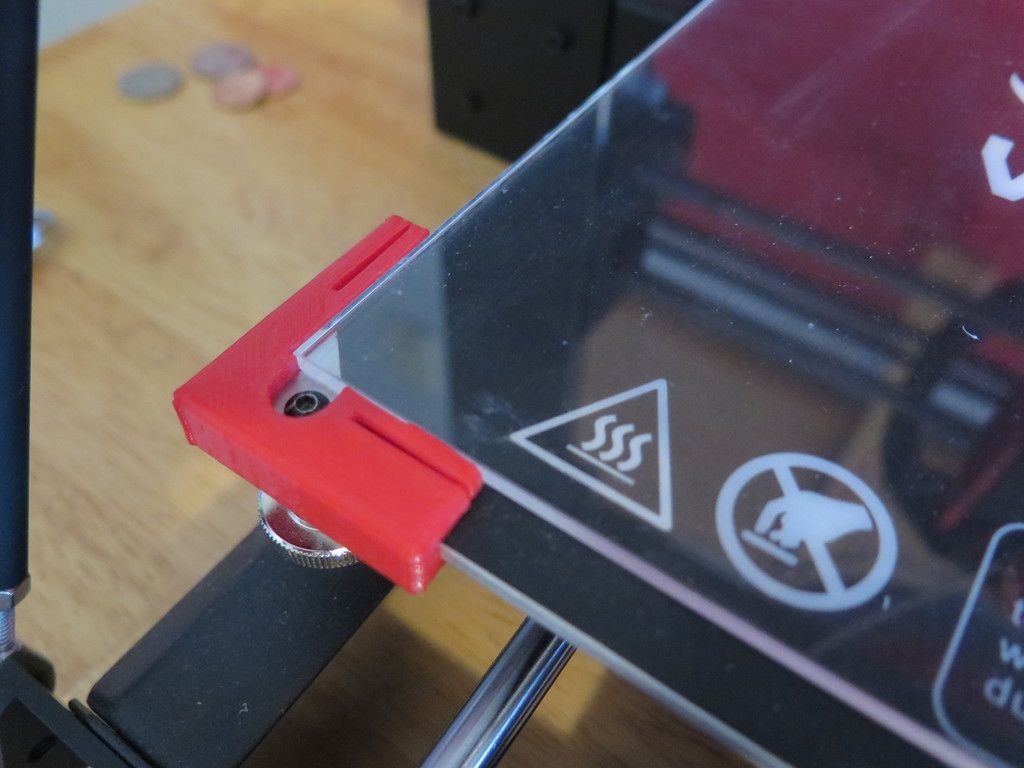Thing o matic 3d printer
MakerWare 2.1.0 Now Available, With Thing-O-Matic Support
| by MakerBot
Version 2.1.0 of MakerWare is now available for download. This latest version of our 3D printing preparation software includes support for the MakerBot Thing-O-Matic, our second generation 3D printer released in 2010. We’re glad to offer this integration for some of our long-time customers, who have contributed significantly to the MakerBot community.
What’s New in MakerWare 2.1.0 Besides support for the Thing-O-Matic, there are some changes and a bunch of bug fixes for MakerBot Replicator, Replicator 2, and Replicator 2X users. In our testing and in your feedback, we’ve seen that some prints need extra help to stick to the build plate, so we’ve included an update to the rafts feature. Now when you choose to use a raft, the MakerBot Slicing Engine will code the first layer of the raft to print much slower than the rest of the layers. This really helps adhesion. Another feature requested by our customers is the ability to heat the build plate on the MakerBot Replicator and Replicator 2X when using PLA. This is now possible in MakerWare 2.1.0. We’ve tested this in-house and had some success. If you’ve been experimenting with using a heated build plate with PLA, tell us about your experience in the comments. In other news, the MakerWare interface got a nice design refresh that we think you’ll enjoy. Click below to see the full release notes and to learn more about using MakerWare for your Thing-O-Matic.
New features in MakerWare 2.1.0
-
Thing-O-Matic now supported in MakerWare.
-
The raft base prints at a slower speed when using MakerBot Slicing Engine (12 mm/second).
-
Users can now heat the build platform when printing with PLA on a MakerBot Replicator or Replicator 2X.

-
The Settings button has been removed from the upper right corner of the screen. The Settings option has been moved to the Edit menu.
-
The design of the buttons within main MakerWare user interface has been refreshed.
Bug Fixes in MakerWare 2.1.0
-
A Windows registry key fix for users unable to connect to a MakerBot over USB.
-
Changed the Mac installer to address installation issues on some Snow Leopard machines.
-
Users are warned if they attempt to save .x3g files with names too long for the firmware (>30 characters), and the filename is automatically truncated.
- MakerWare performs a more complete reset if user attempts to reset the motherboard.
-
Fixed dual extrusion long retract to reset the filament distance in order to reduce blobbing.
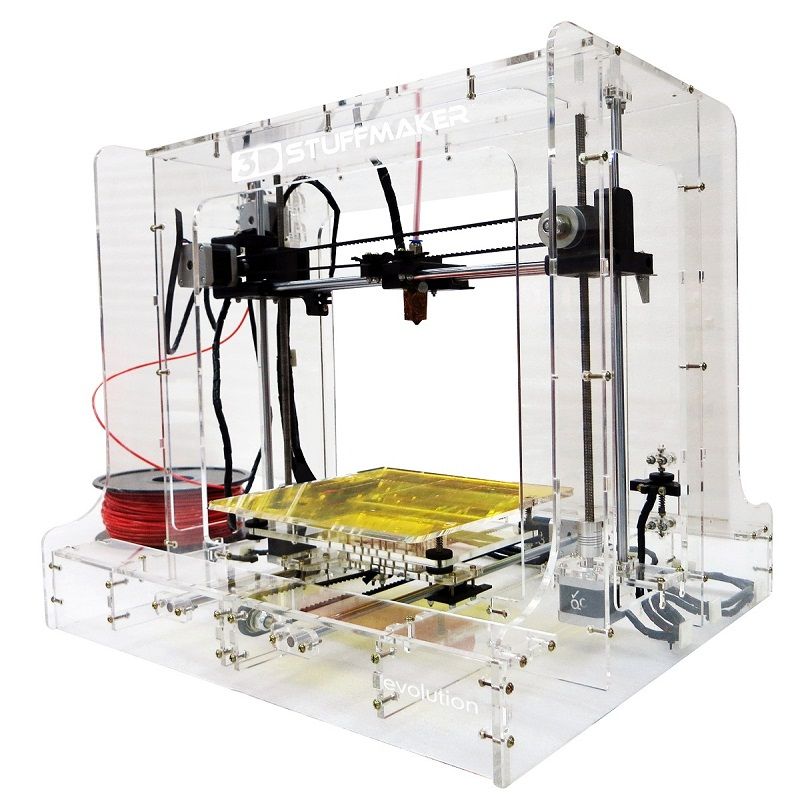
-
Fixed the example Chain_Linked file to print correctly at default settings.
-
Fixed the ‘Uniform scaling’ checkbox bug in Windows XP.
-
Fix for excessive memory usage during the verification stage.
-
Adjusted the Skeinforge custom profile defaults to print better on MakerBots (removed rafts and support as default during dual extrusion).
-
Exported gcode now has variables replaced with appropriate values.
Using MakerWare with a MakerBot Thing-O-Matic
Under the MakerBots menu in the MakerWare toolbar, set your Type of MakerBot to Thing-O-Matic. Then you will have the option to open a Control Panel. If your machine is connected to your computer via USB, it will show up as either “Arduino Mega” or “FTDI”. Highlight the entry and click “Connect”; this will change the name of the entry to “Thing-O-Matic” and allow you to operate your machine. Click “Direct Controls” to change filament and manage build plate settings. You can also run the calibration script from this dialog box. Once these steps are complete, you are ready to use MakerWare normally. Open files into the virtual build space and use the Make It menu to start printing. For more on MakerWare, click here. With the Thing-O-Matic setting in MakerWare, you can:
Highlight the entry and click “Connect”; this will change the name of the entry to “Thing-O-Matic” and allow you to operate your machine. Click “Direct Controls” to change filament and manage build plate settings. You can also run the calibration script from this dialog box. Once these steps are complete, you are ready to use MakerWare normally. Open files into the virtual build space and use the Make It menu to start printing. For more on MakerWare, click here. With the Thing-O-Matic setting in MakerWare, you can:
-
Work within the Thing-O-Matic build volume.
-
Place multiple separate files objects on the build plate at once.
-
Print from your Thing-O-Matic over USB.
-
Print from an SD card using a Gen4 LCD interface.
-
Adjust onboard preferences.
-
Load/Unload filament.

-
Run the Thing-O-Matic calibration script.
-
Export to s3g, x3g, and gcode files.
-
Work with Thing-O-Matic running Sailfish 4.1, 4.2, or 4.3 Firmware.
- Update Firmware to Sailfish 4.1.
Congrats! You read to the end. If you have more technical questions about using MakerWare with a MakerBot Thing-O-Matic, check out the documentation page here. Otherwise, head over to Thingiverse and find your favorite Collection of things to make with your new MakerWare download.
Thing-O-Matic Makerbot – University of Toronto Scientific Instruments Collection
IHPST
The Thing-O-Matic is a 3D printer which was released by Makerbot in 2010.
This model includes the supplemental “automated build platform,” a movable belt system incorporated into the build platform that was meant to automatically release a finished print in order to permit serial printing.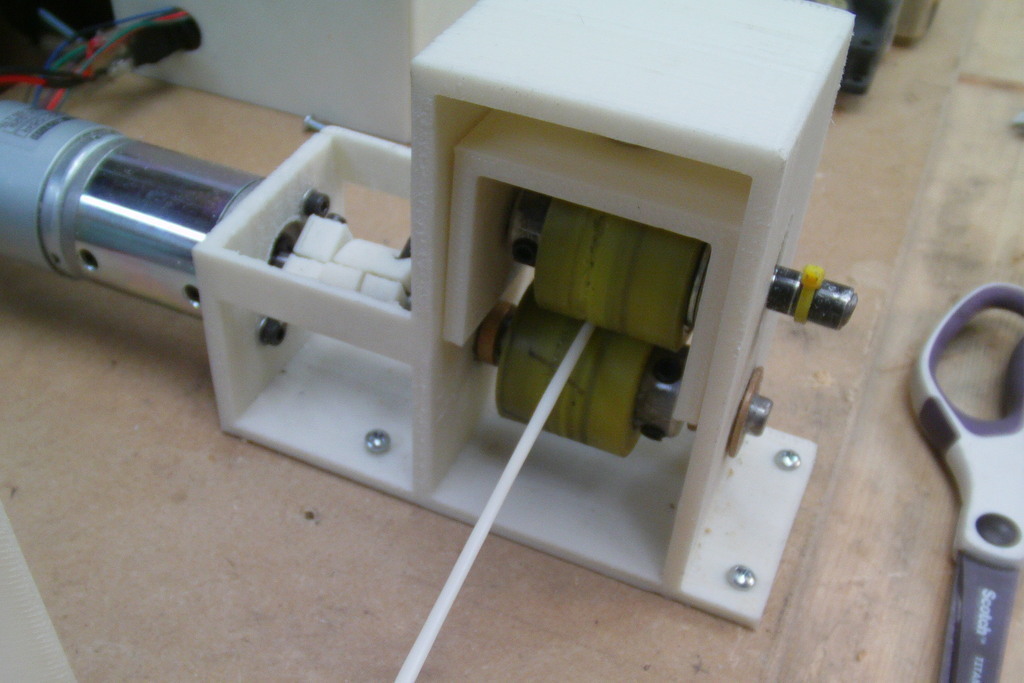
The original model was designed to have all electronics secured inside the bottom of the device, but this custom assembly includes a separate detached compartment with the electronics, allowing for easier troubleshooting. It was assembled by Gabby Resch, a PhD candidate at the Semaphore research cluster at the University of Toronto Faculty of Information.
Gabby Resch describes 3D printing, and his experience assembling and using the Thing-O-Matic in this video.
Accession Number: 2016.ihpst.32
Alternative Name: 3D Printer
Primary Materials:
Plyood, steel, plastic, electronic components
Markings:
Factory labelling reading “ThingOMatic” and “Makerbot Industries” has been painted on various surfaces. An additional sticker reading “Children’s own media museum” has been fixed to one side.
Dimensions (cm):
Width = 30, Length = 60, Height = 40 (with external case placed beside the printer, lid closed)
Function:
A printer, based on the fused deposition modelling (FDM) principle, that creates objects by extruding layers of plastic onto a platform through a heated nozzle.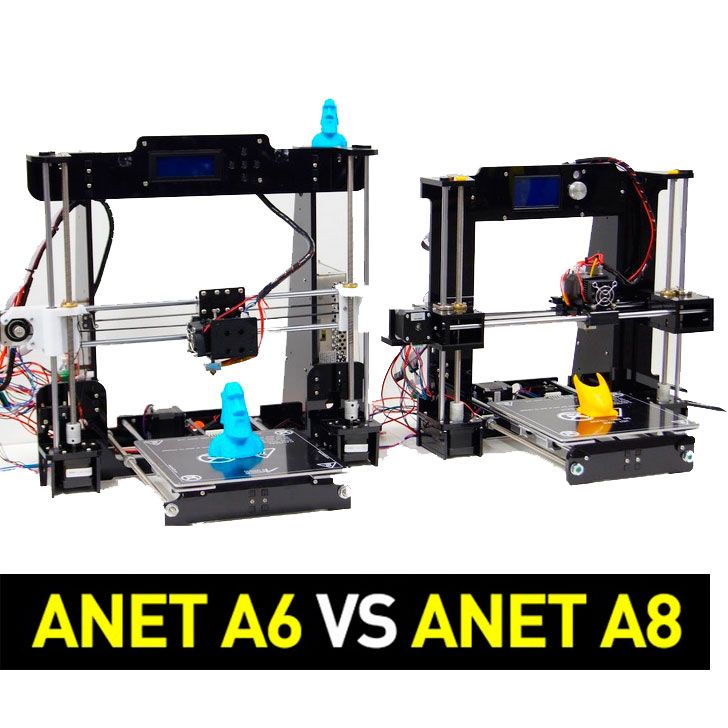 In this instrument, the build platform moves along the x and y axes relative to a print head. The print head is raised and lowered along the z axis.
In this instrument, the build platform moves along the x and y axes relative to a print head. The print head is raised and lowered along the z axis.
Condition:
This machine is well-used and has many visible signs of wear and tear, repair, and customization.
Associated Instruments:
3D printed medical models (on display for Made in Toronto Exhibit)
Manufacturer: Makerbot Industries
Date of Manufacture: 2010
Provenance:
This machine was used at the Semaphore Critical Making Lab of the University of Toronto’s Faculty of Information, and was used primarily for demonstrative purposes.
It was the first 3D printer used at the Semaphore Critical Making Lab and served as an introductory device to the practice of 3D printing for researchers at the lab.
This object was acquired by UTSIC in 2016.
Additional Information and References:
This object was part of the “Made in Toronto” exhibit April 2016-April 2017. Gabby Resch also ran a 3D printing demonstration at the opening reception, and was interviewed on his research and work with 3D printing, within the context of a series of interviews on the makers of scientific materials at the University of Toronto.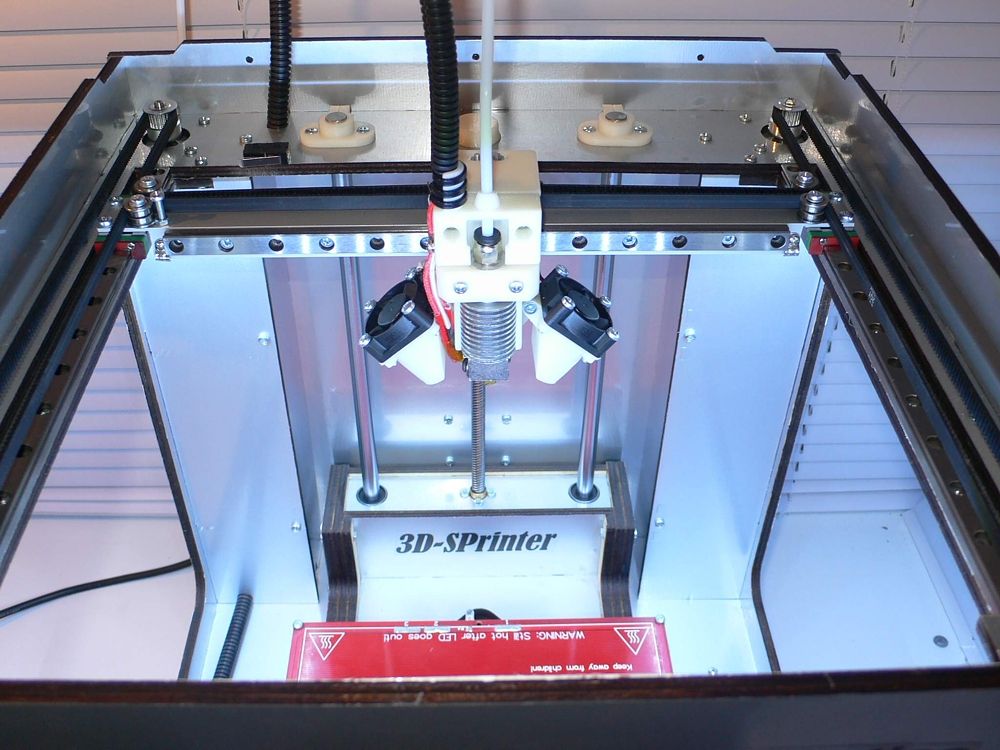
The videos from this interview can be found here: <a href=”https://utsic.org/2016/03/08/critical-making-gabby-resch/”>https://utsic.org/2016/03/08/critical-making-gabby-resch/</a>
For more information on the Makerbot company: <a href=”https://www.makerbot.com/”>https://www.makerbot.com/</a>
For more information on the Critical Making Lab: <a href=”http://criticalmaking.com/”>http://criticalmaking.com/</a>
Historical Notes:
The Thing-O-Matic by Makerbot was the first 3D printer to be widely manufactured and sold at a price that was generally affordable to consumers. The FDM technology on which it was based was much cheaper and simpler than the technologies used in existing commercial printers. Its lower quality prints, with the characteristic visible striations produced by early FDM printers, were acceptable to hobbyists excited at the possibilities of 3D printing.
The Thing-O-Matic was open source technology. It was designed to be assembled and modified by its users–a principle embodied in the considerable modifications made to this unit.
The 2013 acquisition of the Makerbot company by market incumbent Stratasys Incorporated, led to Makerbot’s move away from open source technology. This shift caused controversy both within the company and among Makerbot owners and fans.
Themes:
Flags:
- Donated to UTSIC
The rise and fall of the idea of home production / Sudo Null IT News
MakerBot has made a bold bet that 3D printers will become as popular as microwave ovens. There is only one problem: everyone else did not share her enthusiasm.
In October 2009, Bre Pettis, with his distinctive sideburns and dark-rimmed rectangular glasses, took his place on the stage at Ignite NYC, threw up his hands and shouted "Hurrah!" twice. Behind him, a screen lit up with a PowerPoint slide showing a photo of a hollow wooden box with wires. Jumping up and down with his rich mop of graying hair, Petis began, "I'm going to talk about MakerBot and the future and the industrial revolution we're starting - which has already started.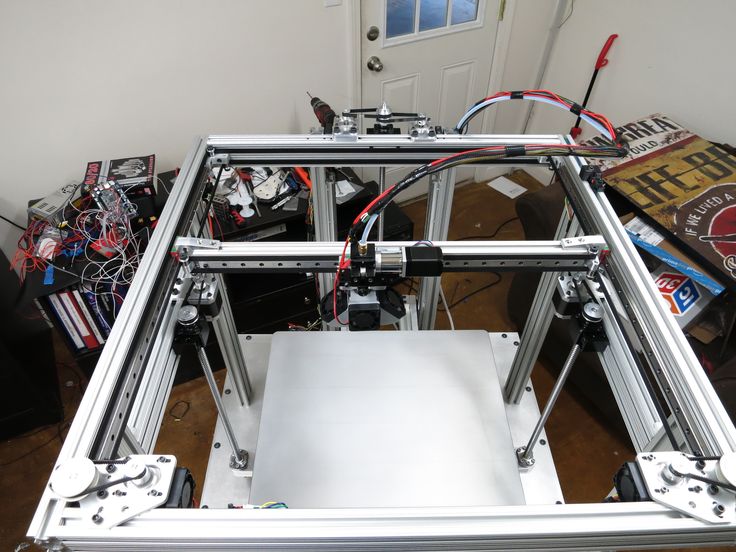 " nine0007
" nine0007
Petis, a former art teacher, became a key figure in a booming market in the late 2000s, a global community of do-it-yourselfers who lived in workshops, workshops, and hackerspaces, as well as at home, working with classic lathes. and modern laser cutters. Petis began his ascent in 2006, recording weekly videos for MAKE magazine, the homemade bible, during which he performed silly tasks like plugging a light bulb into a hamster wheel. In 2008, he co-founded the NYC Resistor hackerspace in Brooklyn. By that time he was already a star. A year later, he launched a startup with friends Adam Mayer and Zach Smith called MakerBot. nine0003
"We had a machine that produced 3D objects and it was awesome," Petis said from the stage at Ignite NYC. Shrinking technology from the size of large $100,000 machines to desktop boxes, MakerBot has started a revolution in 3D printing. With the help of a 3D printer, objects designed on a computer were physically formed, in three dimensions, by superimposing layers of molten plastic on top of each other. And now any MakerBot owner could design and print their own objects.
And now any MakerBot owner could design and print their own objects.
From Pettis's point of view, the consequences of this were startling. People printing objects at home could go to the store less often and do whatever they want. He shared a story about “opened happiness”: a certain person needed a ring to propose, and he opened it. For five and a half minutes, Petis lauded what he said was "Industrial Revolution 2" led by MakerBot.
"You will be your own producer," he said. He concluded his presentation by asking the audience to “make your own future.” nine0003
A year before MakerBot was founded, analysts predicted that the global 3D printer market, worth about $1.2 billion, would double by 2015. By the end of 2012, it had practically grown. MakerBot seemed to be just in time: that year the company released its most famous and probably best device, the Replicator 2. MakerBot predicted that the device would appear in thousands of homes. Wires announced in October 2012 that its release was a "Mac Moment" for MakerBot, with the cover featuring a confident Petis holding his new brainchild and the words "This machine will change the world. " nine0003
" nine0003
“MakerBot is, or at least was like, the Kleenex brand for the 3D printing world. MakerBot has become synonymous with the 3D printer,” said Matt Stultz, who previously worked at the company for five months and is now a digital production editor at MAKE.
Petis has become a cult character. Even before launching the company, according to Staltz, “we were already following everything he did, watching weekly videos and watching his projects.” With the release of MakerBot, he became the king of hackers. nine0003
But the second industrial revolution, and the time when each-to-himself-producer, armed with new ideas and a faithful MakerBot, never came. By 2015, Petis, Mayer and Smith were moving on to other projects. A new director and team joined the company, and three waves of layoffs cut the original 600 employees by almost half. This year, the most popular desktop 3D printer is from a Taiwanese manufacturer.
How did MakerBot, the darling of the 3D industry, fall so low and so quickly? Petis did not respond to requests for comment, and Smith and Mayer declined to be interviewed for this article.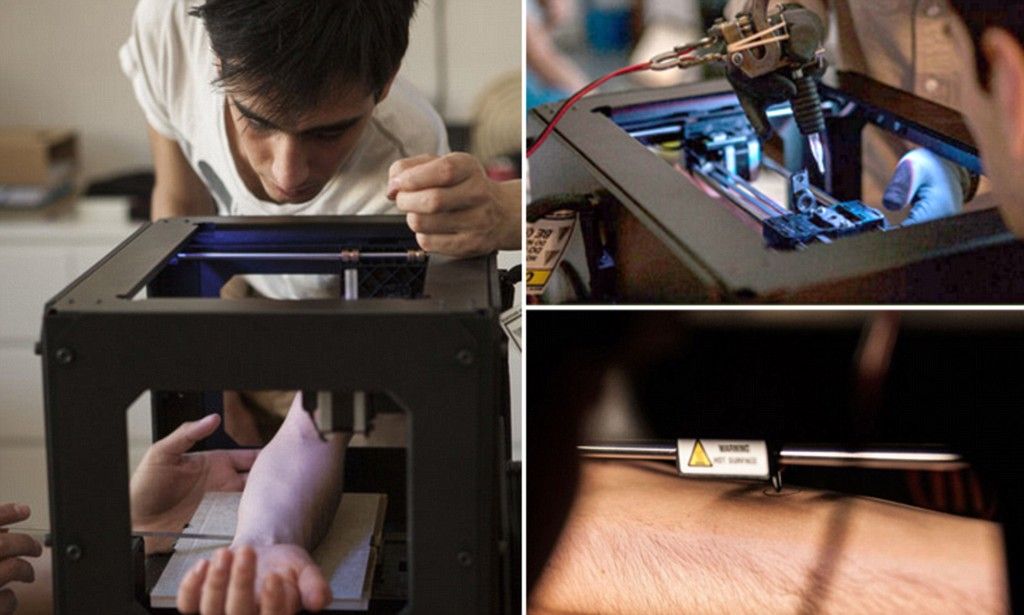 nine0003
nine0003
We collected information from various industry observers, today's MakerBot executives, and a dozen former employees of the company. Some introduced themselves, while others wished to remain anonymous.
Within a few years, MakerBot needed to make two successful moves. It was necessary to show millions of people the wonders of 3D printing, and then convince them to shell out more than $1,000 for a machine. She also needed to develop technology that was fast enough to keep customers happy. And these tasks turned out to be beyond the strength of the young company. nine0003
"MakerBot made a big commitment and was trying to meet a market demand that never came," says Ben Rockhold, who worked for MakerBot for four years as an engineer. In pursuit of the dream of everyone becoming a manufacturer, MakerBot tried to produce printers that were both inexpensive and attractive, but they never succeeded.
At a TEDx conference in New York in 2012, Petis said, “When you have a MakerBot, you have a superpower. You can do whatever you need." nine0003
You can do whatever you need." nine0003
Years passed before someone dared to say that it was not true.
* * *
Early on, the MakerBot-based community flourished around these affordable printers.
The inspiration came from British professor Adrian Bowyer, who started work on the RepRap, a desktop 3D printer in 2005, that used fused deposition modeling to print objects. Bower wanted to create a printer that could print a copy of itself. One RepRap would spawn another by printing parts, and so on. In New York, three friends, having learned about this, came up with their own idea. Can they make a machine that prints the parts needed to assemble RepRap? And the answer was positive. Working at the NYC Resistor hackerspace, Zach Smith, Adam Mayer, and Bre Petis created the CupCake CNC, a machine that could print RepRap parts on demand. nine0003
MakerBot Assembly Parts
“The idea was to make a small number of these printers so that people can make their own RepRap, and the first batch sold very quickly,” says Staltz, who has worked for MakerBot since December 2011 to April 2012.
In January 2009, the trio founded MakerBot with a $75,000 investment, of which $25,000 came from Bower and his wife, Christine. The company was supposed to sell CupCake as a DIY kit. By spring, the company was selling CupCake sets for $750 each. “We went out because of MAKE magazine, we got the attention of the media, who really liked the idea, and they talked about it all the time,” says Rockhold. nine0003
CupCake was also an open source project. MakerBot released the hardware and software for the machine for free, and those who bought CupCakes made their own corrections and additions, which the company included in future versions of printers. The open project brought together people from inside and outside the company, and they were all looking for improvements. It also served as a good advertisement, and became the basis and attractive side of MakerBot.
“Openness is the future of manufacturing and we are at the beginning of an era of sharing,” Petis told MAKE magazine in 2011. “In the future, people will look back at businesses that didn’t want to share with their customers and wonder how they could work the other way around.” nine0003
“In the future, people will look back at businesses that didn’t want to share with their customers and wonder how they could work the other way around.” nine0003
MakerBot represented the revolution in the production of things. A single CupCake could create near-exact replicas of itself (with the exception of bolts and other metal parts), as well as replicas of countless other objects. This movement was to evolve from a geeky subculture into a transformative force that would change society.
The demand for CupCakes was so great that the owners of these machines even helped MakerBot print parts for distribution of new sets. Active forums flourished on Google Groups and Reddit, with fans sharing object designs on Thingiverse, a site started by the company that stored files under a Creative Commons license. nine0003
Some amateurs have made corrections to CupCakes themselves. Christopher Jansen, user ScribbleJ on Thingiverse, has figured out how to reduce machine noise and improve print quality. Another user, Whosawhatsis?, has developed a more efficient extruder, a component that extrudes melted plastic.
Another user, Whosawhatsis?, has developed a more efficient extruder, a component that extrudes melted plastic.
"Because our project is open source, users know they have the right to hack the code and design," Petis said in an interview in early 2010. “They also know that if they improve the car, they can share that improvement with others and everyone will benefit from it.” nine0003
The corporate culture at MakerBot was also open and flexible. The first office in Brooklyn was more like an experimental laboratory. Employees arrived late and left late. One day you could be packing CupCakes, the next you could be checking extruders. Petis answered support questions, popped into the MakerBot Operators Google Group for comments, and occasionally helped employees navigate the complexities of the hardware by encouraging them to do things that would have gotten them fired in a more strict company. On one of his first days on the job, Ethan Hartman wondered if PLA, the plastic used to create 3D objects, would catch fire if it stuck to an extruder. He remembers that Petis grabbed the burner, a piece of plastic, and they took turns trying to light it on the floor. nine0003
He remembers that Petis grabbed the burner, a piece of plastic, and they took turns trying to light it on the floor. nine0003
“Nobody worked there to put in hours and make a lot of money selling,” says Hartman, who worked as a customer service and then company manager from April 2010 to August 2012. “People worked there because they I liked the idea that open iron could be part of a commercial enterprise.”
A lot of things were allowed in the company. Interested passers-by were not forbidden to enter unannounced and see what was happening. “In the earliest days, there was no clear operational structure. We didn't think we'd be able to support the project as it started to grow, and there was no expectation that the company would ever grow very much,” says Matt Griffin, public relations manager at MakerBot since December 2009to August 2012.
Employees thought it was a dream job and a chance to turn an alternative future into reality - a world where everyone can become a producer. Hartman says that MakerBot being an open source company was the single biggest reason people loved working on it. They agreed to even lower salaries. One person recalls that his salary at MakerBot was $22,000 less than at his previous job. But working for the company was exciting. They had to turn the market on their own terms. nine0003
Hartman says that MakerBot being an open source company was the single biggest reason people loved working on it. They agreed to even lower salaries. One person recalls that his salary at MakerBot was $22,000 less than at his previous job. But working for the company was exciting. They had to turn the market on their own terms. nine0003
In September 2010, MakerBot began selling the Thing-O-Matic, their second 3D printer, as a kit for $1,225 (or $2,500 for the assembled version). By that time, many people were already using CupCakes to create various things, such as an owl-shaped headphone winder or 3D puzzles. Thing-O-Matic upped the ante. A Texas school used it to make chess pieces that looked like the landmarks of San Antonio and then sell them for $150. Petis appeared on The Colbert Report and printed a bust of Stephen Colbert on Thing-O-Matic, which is still available for download from Thingiverse. MAKE magazine compared the appearance of Petis with "a five-minute infomercial and commercial" and rejoiced noisily - they say, "who in the audience would not want to buy one for themselves?". nine0003
nine0003
In the following years, trinkets were replaced by more serious undertakings, such as a 3D-printed prosthetic arm. It seemed that the vision of Petis, described by him in 2009, was being realized. People printed the objects they needed. “At first the general theme was that 'We want to change the world'. The democratization of production is a phrase we used both inside and outside the company,” says a former member of the company's web team, who has worked there since September 2010.
The company has kept this spirit alive. MakerBot was the place where everyone went to meetings, and employees had the ending “bot” at the end of their formal position. Andrew Pelkey was hired in the second week of March 2012 to write blog posts, copywrite and oversee social media posts. But he says that he was not a writer, but a “bot” writer (WriterBot). nine0003
The Wire's then-CEO Chris Anderson and Bre Petis, 2010, New York
The classic startup mindset is: fail fast, find solutions, iterate, build fast, release. Petis called it "the cult of the job done" and listed the principles on his blog. One of them: “A mistake is considered a done deal. Make a mistake."
Petis called it "the cult of the job done" and listed the principles on his blog. One of them: “A mistake is considered a done deal. Make a mistake."
Petis was proficient in building a community of followers online. Fans adored him, he was an affable, admirable person who loved to create something and explore what 3D printer lovers created. In his talk at Ignite NYC, he showed a photo of a working whistle, designed by a user in Germany and printed out by a New Yorker. “We invented teleportation. Show me how to get a whistle from Germany to New York without a rocket,” he joked gleefully. The audience picked up his laughter. nine0003
And over time, it was Petis, not Mayer or Smith, who became the public face of the company. In the 2014 documentary Print the Legend, Petis recalls a conversation with the co-founders when they compared him to another tech prodigy. “You have to be Steve Jobs,” Petis recalls on camera, and then says that he himself wanted to be the equivalent of Steve Wozniak.
But Petis was doing a great job at MakerBot as Jobs, and customers were picking up the Thing-O-Matic and CupCake that MakerBot was selling on Father's Day 2011 for a special price of $455. “The typical MakerBot user was someone who recently found out that 3D printers are cool. And when they found out that they could be bought for $1,000 or less, it completely turned their heads,” says Hartman. nine0003
It wasn't just tech journalists who wrote about MakerBot anymore. Rolling Stone wrote about Thing-O-Matic. CBS Evening News wondered if the ubiquity of MakerBots would give us the ability to create anything. The New York Times printed Thing-O-Matic diagrams.
By August 2011, MakerBot had sold 5,200 printers. It received $10 million in investments that month — from the Foundry Group, Bezos Expeditions and others — and began to grow by adding another office in Brooklyn. By autumn, MakerBot employed 70 people. nine0003
The excitement grew, but early employees felt that change was inevitable. “Collecting investments is what got people excited. The attitude has changed to 'Now we have to grow dramatically and start growing the company at a tremendous rate',” says Hartman.
“Collecting investments is what got people excited. The attitude has changed to 'Now we have to grow dramatically and start growing the company at a tremendous rate',” says Hartman.
In a post about the investment, Petis wrote that the investment and active hiring was necessary to "democratize manufacturing and make 3D printing easier for everyone!".
* * *
The company knew it needed a simpler, plug-and-play printer to attract people other than hackers. “The kits were difficult to assemble. People needed pre-assembled things that just work,” says Hartman.
So MakerBot decided to develop and present at the 2012 Consumer Electronics Show (CES) their new "MMM" product, the Mass Market MakerBot. It was planned that the cost of the MMM would be comparable to the cost of a game set-top box - and no self-assembly. Such a device should have appealed to typical Walmart and office equipment shoppers. nine0003
The company secretly orchestrated the development of MMM by opening a subsidiary in China, a "crazy top-secret project" as one former employee called it.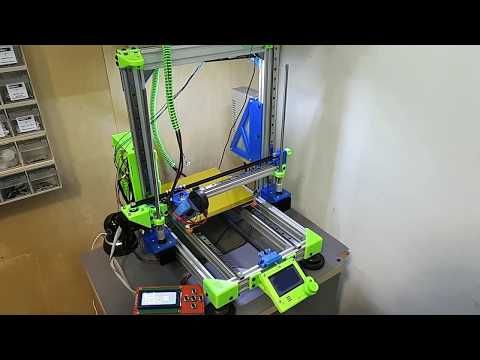 Zack Smith, an engineering specialist, became the head of development. He took key engineers from Brooklyn and China.
Zack Smith, an engineering specialist, became the head of development. He took key engineers from Brooklyn and China.
But in September 2011, Petis decided to change the course of the company. He called the members of the R&D team and announced that in three months they should design, build and test another 3D printer, The Replicator. “The Replicator was born because Bre showed up to a meeting, grabbed all the developers in Brooklyn, and said, we need a printer for CES, but didn't say why,” says Rockhold. Boxes of MMM versions arrived in Brooklyn intermittently, but "the rate of printer improvement was very slow," says Rockhold. nine0003
CES was approaching, and Pettis wanted to see the printed objects for verification: one the size of a loaf of bread and the other a DeLorean from Back to the Future. Replicator passed the test and became the main number of the company at CES. Its retail price was $1749.
It never became an inexpensive printer, but it still won the "Best Emerging Tech" award at CES. It had a certain charm - the frame of the printer was made of balsa. And it was sold fully assembled. The hardware and software were still open source, so the community could continue to support the project. And besides, the fans themselves could fix possible problems, which made the Replicator a workhorse in their eyes. nine0003
It had a certain charm - the frame of the printer was made of balsa. And it was sold fully assembled. The hardware and software were still open source, so the community could continue to support the project. And besides, the fans themselves could fix possible problems, which made the Replicator a workhorse in their eyes. nine0003
A few months later, in April 2012, MakerBot ended all operations in China. Zach Smith retired. “There was no way to mention MakerBot China,” says one former employee.
According to Rockhold, people bought the Replicator in "packs". But he says that the printer had serious problems: the heated platforms burned out because the cables did not maintain the desired voltage, and the machine itself was very sensitive to static. If a user who had built up a static charge inserted an SD card with a file to print, the machine could make a loud sound - the sound of the printer being destroyed, or, at best, the sound of an expensive repair. nine0003
By that time, MakerBot was not the only printer - and was in danger due to the fact that the company could not release printers cheaper. A month before CES 2012, web developer Brook Drumm raised $831,000 on Kickstarter for Printrbot, which was sold as a build kit and cost just $549. The Cube, a glossy plastic desktop printer from 3D Systems, a serious company specializing in industrial 3D printing, also debuted at CES 2012 for $1,299. A few months later, Solidoodle, founded by former MakerBot COO Sam Cervantes, released a new no-build printer priced at just $49.9.
A month before CES 2012, web developer Brook Drumm raised $831,000 on Kickstarter for Printrbot, which was sold as a build kit and cost just $549. The Cube, a glossy plastic desktop printer from 3D Systems, a serious company specializing in industrial 3D printing, also debuted at CES 2012 for $1,299. A few months later, Solidoodle, founded by former MakerBot COO Sam Cervantes, released a new no-build printer priced at just $49.9.
That same year, analytics firm Gartner made an important discovery. On the "Gartner Hype Cycle" chart, which tracks emerging new technologies through stages from over-enthusiasm and disillusionment to sobering realism, 3D printing was placed at the very top of the peak labeled "peak inflated expectations." In an attached report, Gartner clarified that 3D printing refers to home use of printers. The idea of a consumer technology market for "do-it-yourself manufacturers" has reached the height of the hype. nine0003
* * *
In May 2012, MakerBot announced its move to the 21st floor of the MetroTech Center in Brooklyn.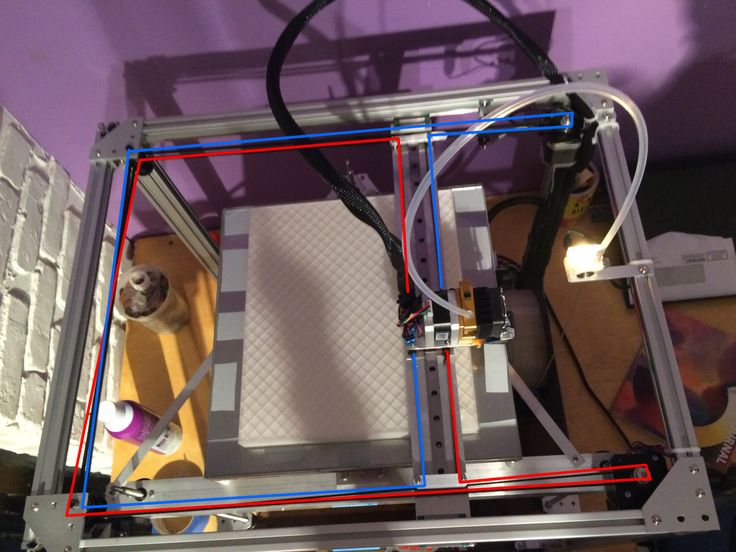 It already employed 125 people and was preparing to introduce a new printer, the Replicator 2, to the world. “There are no signs of a slowdown in demand anytime soon,” Petis said at the time. "It won't be long until the MakerBot is as common as the microwave!"
It already employed 125 people and was preparing to introduce a new printer, the Replicator 2, to the world. “There are no signs of a slowdown in demand anytime soon,” Petis said at the time. "It won't be long until the MakerBot is as common as the microwave!"
And then TangiBot came out in August.
On Kickstarter, engineer Matt Strong raised $500,000 to mass-produce a replica of the Replicator. "I want to bring a low-cost device to the market that users can trust," Strong said. "Replicator is the best printer and open project." nine0003
In other words, Strong simply made his Replicator under a different name. And then he offered to sell TangiBot printers for much less money, thanks to the production in China. So Strong says he could sell the printers for $1,199, $550 less than the Replicator. And technically he could do it - an open source project is not protected by copyright law. Therefore, Strong raised funds on Kickstarter to find a contractor and start production.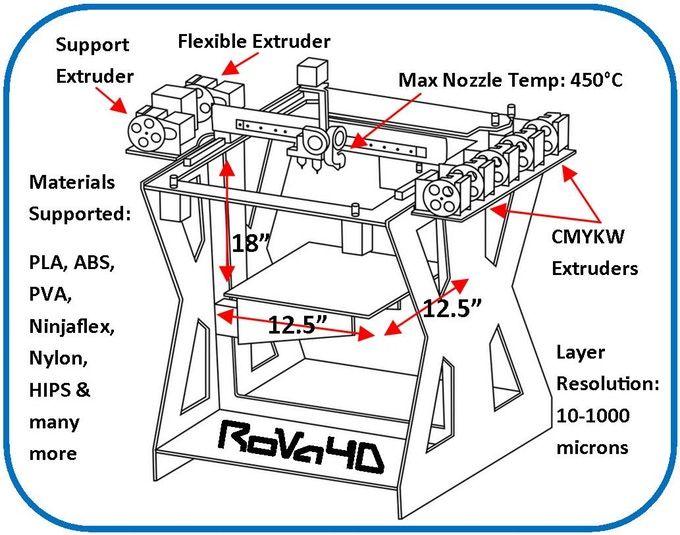
The community rallied around MakerBot and declared the TangiBot campaign a robbery. While the campaign failed, the experience made Pettis reconsider his love of open source projects. “The Replicator 2 was ready to go, and Bre saw the TangiBot and said, 'No, we're done with this business strategy,'” says Rockhold. nine0003
When the Replicator 2 came out, parts of the machine were covered. The black metal frame was patented, as was the graphical interface that ran the printing software on the computer. These changes looked insignificant, but the public gave the company a scolding. One former employee said that people were furious. All the fixes and improvements they made for the project for years, for free, became closed.
The community was dismayed by this move, and an outpouring of emotion hit the company's operators in the Google Group. Some users showed cautious sympathy: “I want to hear that he, like everyone else, took this decision hard, and I hope he finds a way out.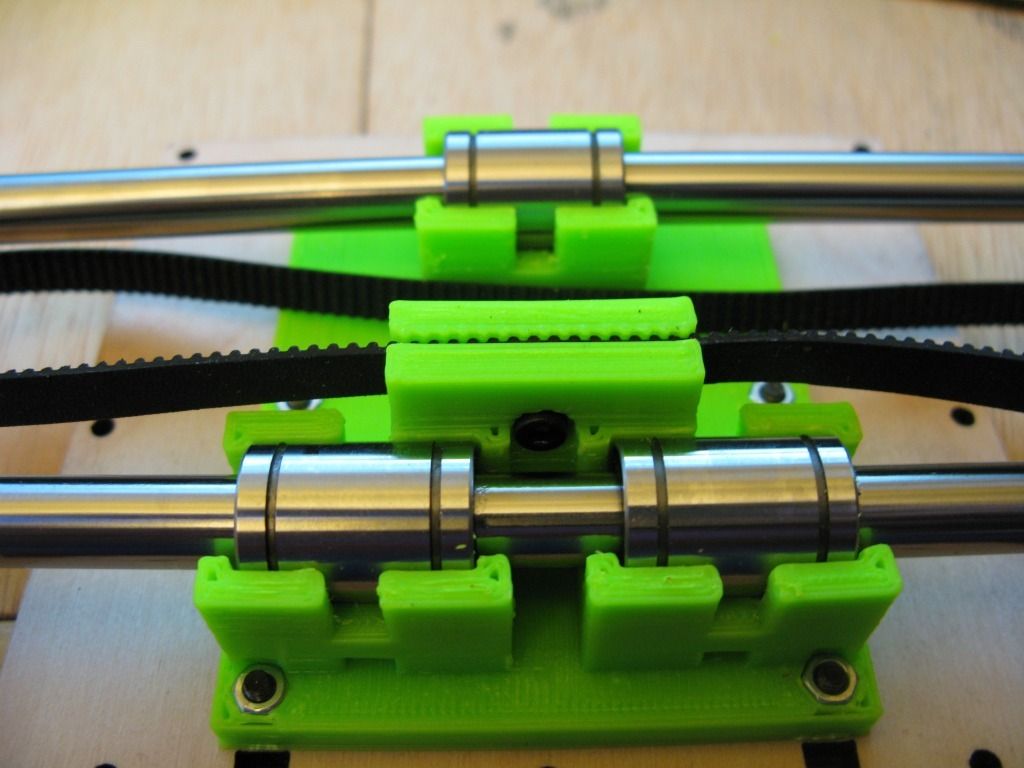 Because if he did that 180 degree turn without any emotion, I would lose respect for Bre and MakerBot. But I doubt that this is the case. I hope it's not, we'll see." Others were more specific: "There is no reason to hope that a closed project will protect the design from theft or reverse engineering and resale. A closed project only harms the community." nine0003
Because if he did that 180 degree turn without any emotion, I would lose respect for Bre and MakerBot. But I doubt that this is the case. I hope it's not, we'll see." Others were more specific: "There is no reason to hope that a closed project will protect the design from theft or reverse engineering and resale. A closed project only harms the community." nine0003
“I think they were really hurt by us and felt left out,” Pelkey says. "Basically, MakerBot was a club and people felt like they were part of that club."
Employees were confused as well, as shutting down the project alienated the project from the fans, from the community that readily purchased MakerBot printers. “They believed that they had already made a name for themselves, and they no longer needed the community. But 3D printing today is not yet able to live without the community,” says Staltz. "If you piss off the early hobbyists, the 3D printer owners, they won't tell everyone 'Buy a MakerBot'." nine0003
The company has turned its back on the original idealism that founded it.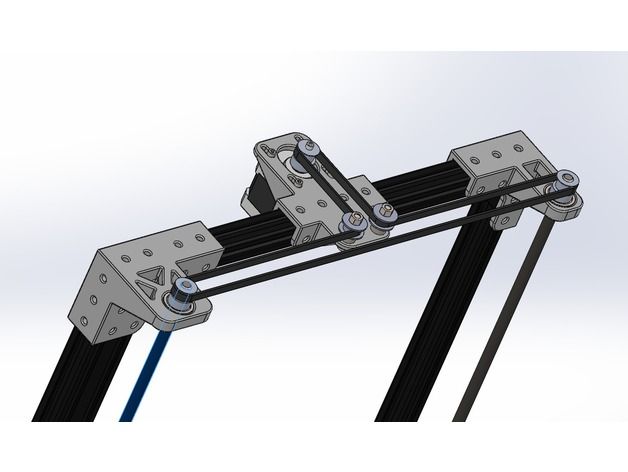 The "era of exchange" that Petis referred to a year ago is over.
The "era of exchange" that Petis referred to a year ago is over.
Looking back two years later, Petis seemed to imply that he had always known that MakerBot could not exist in the open. “We could stay open, but that would destroy the business,” he told Politico in August 2014. “So the question is, what is our mission? Do something absurd, utopian, unrealistic? Or are 3D printers for everyone? I chose 3D printers for everyone." nine0003
The company has raised the stakes by releasing a proprietary product. So far, it has progressed in tandem with a dedicated community that is not very demanding on technical issues. Now, when their printer could not be repaired on its own, and when it had to fit any user, perfect work was required from it.
* * *
In June 2013, MakerBot was bought by Stratasys, one of the world's largest 3D printing companies, for $403 million, plus $201 in performance-based bonuses. MakerBot launched a massive hiring campaign and showed off three new desktop printers for CES 2014.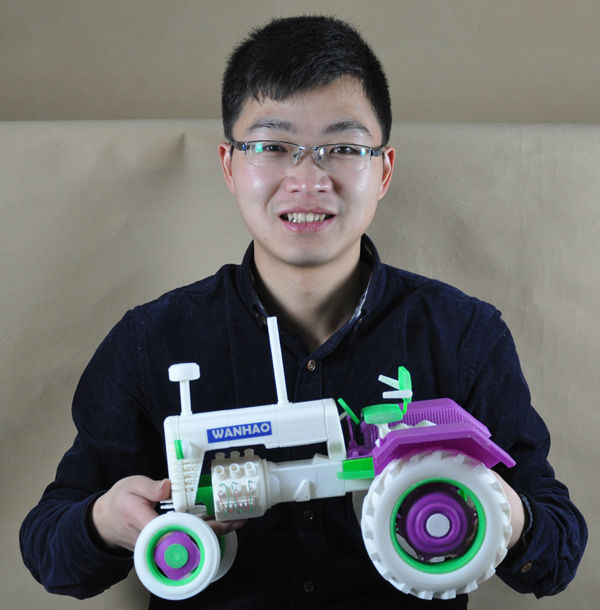 They had new features like WiFi support, LCD displays and a new Smart Extruder. nine0003
They had new features like WiFi support, LCD displays and a new Smart Extruder. nine0003
But the cost was still too high. The Mini was priced at $1,375. XYZprinting debuted the machine at the show for $499, which is exactly what the Mini was supposed to cost according to MakerBot's 2012 plans that Backchannel got its hands on.
“Bré really wanted to reach this value, but no one was able to do it,” says Jeff Osborne, vice president of sales and business development from March 2012 to early 2013. “He knew that the market needed a cheaper device” . nine0003
According to one former employee, some of the machines shown at CES 2014 didn't even work. But still they all received awards. “It was the peak moment of the hype, as even at CES they were ready to give out awards for cars that couldn't even show their work,” he says.
MakerBot did well in 2014. Stratasys' annual report shows that MakerBot sold 39,356 printers in 2014, down just 1,194 printers since 2009. to 2013. Each printer came with a note autographed by Petis stating that this machine would “give you the superpower to do what you can imagine.” By the fall, Staples and Home Depot stores were already selling new printers from MakerBot.
to 2013. Each printer came with a note autographed by Petis stating that this machine would “give you the superpower to do what you can imagine.” By the fall, Staples and Home Depot stores were already selling new printers from MakerBot.
They again had technical problems - but now the buyers could not help with their solution. More savvy users posted questions in the MakerBot Operators Google Group. One of the most hostile users stated that "after a war that lasted a year, I lost my patience." A petition has surfaced on Change.org demanding that MakerBot recall its printers. nine0003
One of the sources of user frustration was the Smart Extruder, which was supposed to inform the user that the plastic had run out. Ultimately, both MakerBot and Stratasys were sued, alleging that the company deliberately released a non-working extruder. In July 2016, the case was closed due to lack of evidence.
On Brokelyn.com, a former employee of the company, Isaac Anderson, blamed the failures of all three machines on the company's decision to move away from the open source project. It couldn't rely on its customer base of "skilled and enthusiastic people who provided a wealth of technology feedback and suggestions for improvements." The new class of buyers, he wrote, "consisted of unskillful people, did not give useful feedback, but gave only unrealistic expectations." nine0003
It couldn't rely on its customer base of "skilled and enthusiastic people who provided a wealth of technology feedback and suggestions for improvements." The new class of buyers, he wrote, "consisted of unskillful people, did not give useful feedback, but gave only unrealistic expectations." nine0003
Bill Buell was MakerBot's Director of Engineering, which released the three machines shown at CES 2014. He says developing three machines at the same time with a tight deadline was very stressful for the engineering teams. But he also claims that each printer has been extensively tested and met the company's specifications for a ready-to-sell product.
“I can see why Bre wanted to make all three cars. He wanted an explosive response to CES, which is already a habit,” says Buell. "From an engineer's point of view, it was a big risk." nine0003
The weaknesses of the printers began to affect the company. In the first quarter of 2015, Stratasys directors spoke of a slowdown in the 3D printer market, and mentioned that MakerBot sales were less than expected.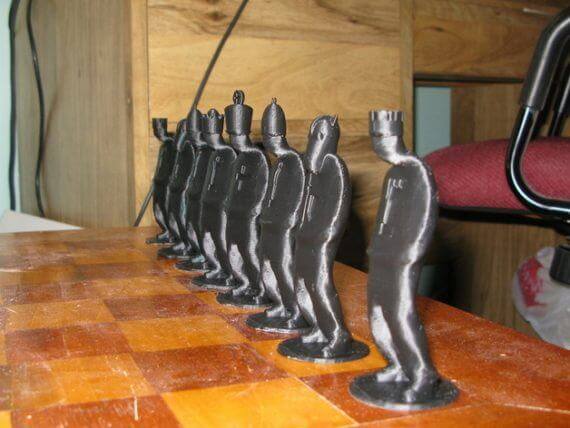 In April 2015, Jonathan Yaglom, director of Stratasys, became the CEO of MakerBot, but the fate of some employees was already sealed. That month, the company said goodbye to a fifth of its employees.
In April 2015, Jonathan Yaglom, director of Stratasys, became the CEO of MakerBot, but the fate of some employees was already sealed. That month, the company said goodbye to a fifth of its employees.
In October of that year, MakerBot laid off another fifth of its employees. “We are not achieving results, which means financial problems,” Jaglom told me at the time. The company reportedly sold just 18,673 printers in 2015, less than half of what it sold in 2014.
Last April, Yagolm announced that MakerBot would close its 16,000 m2 manufacturing facility at 2 in Brooklyn, lay off more employees, and transfer all production to China as the company celebrated the sale of its 100,000th printer. An analysis of the company's reports showed that in the first three months of 2016, MakerBot sold only 1,421 printers.
“In 2014, the company was confident that the consumer market was ripe. In 2015, we realized that the market was not what we imagined it to be,” Jaglom told me the day MakerBot announced it was closing the factory.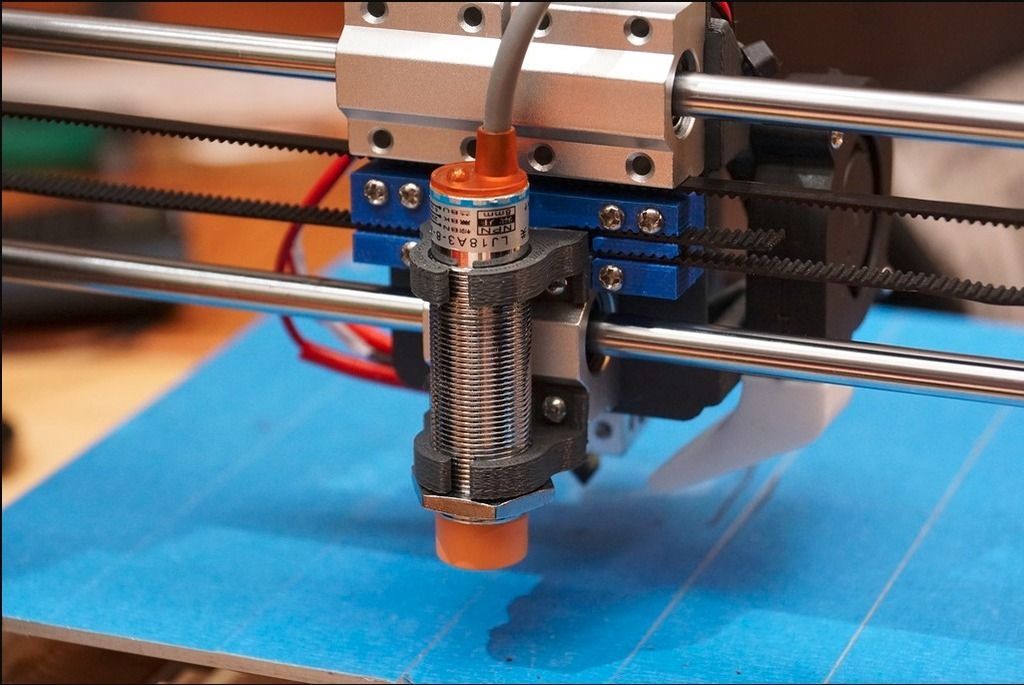 nine0003
nine0003
Turns out 3D printers aren't all that revolutionary, at least not yet. Big companies like General Electric and Ford are experimenting with 3D printing and using it to make parts. GE bought the two respective companies this year for $1.4 billion. But the technology is not yet reliable enough, fast enough, and cheap enough to replace traditional technology.
This is also a rather complicated process. To print the desired object, you need to know how to create a 3D design, which, of course, has become much easier to do thanks to online programs such as TinkerCAD. But the extruder head may become clogged during printing. The backing may warp. The result may be crooked, which will require you to rotate the part next time. “It takes a lot of work. It's not like you can push a button and get what you imagined,” says Rockhold. nine0003
In the dizzying days of 3D printing, there were no questions to ignore or tasks to put off until later. What is happening now Yaglom calls the "calming down of the hype" in the industry, when the perception of her society finally begins to coincide with reality.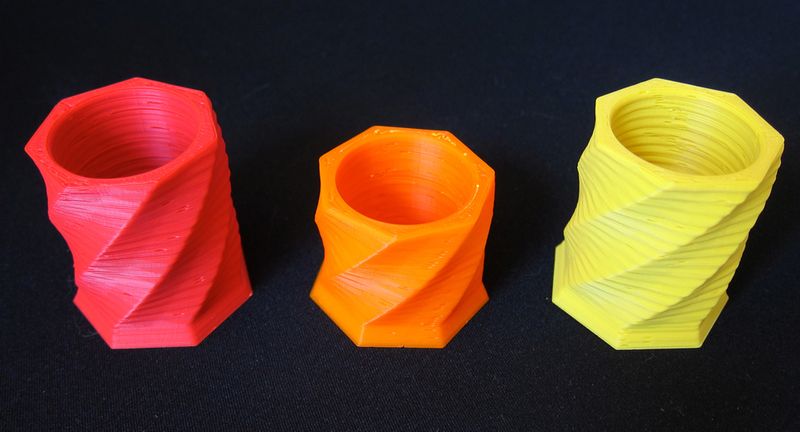 Stratasys' stock price stumbled from a record $136 in January 2014 to $25 in October 2015 when MakerBot announced a second wave of layoffs.
Stratasys' stock price stumbled from a record $136 in January 2014 to $25 in October 2015 when MakerBot announced a second wave of layoffs.
“People want things to happen faster, we live in a world of speed, but it takes time to get a new thing to market,” says Jenny Lawton, who joined MakerBot in 2011 and has worked as an acting director. CEO from late 2014 to early 2015. “3D printing is still in progress. She looks like an awkward teenager." nine0003
Other 3D printing companies also suffered. Solidoodle suspended work last spring. Electroloom, which created fabric printing, closed in August, in part due to a "poorly defined market opportunity." Stratasys' main competitor, 3D Systems, announced in the fall of 2015 that it was closing a factory in Massachusetts that employed 80 to 120 people. At the end of that year, the company decided to stop selling Cube printers. Like MakerBot, it struggled to compete with smaller startups that had lower overheads and cheaper printers. Today, Taiwanese XYZprinting knocked MakerBot out of first place to become the world market leader in desktop 3D printers.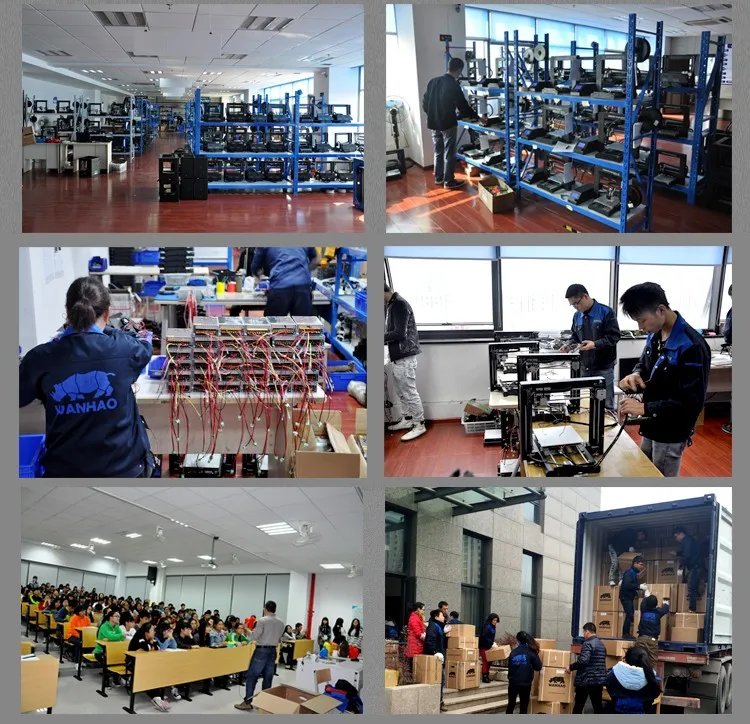 nine0003
nine0003
This year's Wohlers Report, an annual report on the 3D printer market, seems to be saying the opposite: 270,000 desktop printers were sold last year. But mostly these cars are bought by commercial organizations and schools, not individuals.
"The plan followed by MakerBot, 3D systems and others is an illusion - one in which the average home user has one or more of these machines - there is simply no market for them," says Terry Wohlers, president of the consulting firm that publishes the report. . "Maybe that's where MakerBot got it wrong in the first place, believing there was such a market." nine0003
* * *
On a sunny September morning, Jonathan Yaglom welcomed journalists, business leaders in Brooklyn, and MakerBot employees to the MetroTech Center. The company had good news. It released the sixth generation of desktop printers, the Replicator+ and Mini Replicator+.
During the hour-long presentation, employees talked about larger frames for printing larger objects, software and hardware improvements. The new app from MakerBot allows even a novice to walk through the printing process from start to finish. The new printers are much quieter than the previous ones. They can finally work on the desk without distracting people. "We've completely redesigned them entirely," Mark Palmer, Head of User Experience Development at MakerBot, told the crowd. nine0003
The new app from MakerBot allows even a novice to walk through the printing process from start to finish. The new printers are much quieter than the previous ones. They can finally work on the desk without distracting people. "We've completely redesigned them entirely," Mark Palmer, Head of User Experience Development at MakerBot, told the crowd. nine0003
Jaglom described the change in company policy. In the past, MakerBot "created products and hoped to find consumers." Now the company has changed: it asked users what they needed and developed products for their needs. This was done with an eye to the two markets Yaglom believes MakerBot would be best suited for: professional engineers with designers, and teachers. Today, more than 5,000 schools in the US have MakerBot printers.
Petis stepped down as head of MakerBot in September 2014, and was going to lead an "innovation workshop" at Stratasys called Bold Machines. The goal of the project is to prove that 3D printing can be applied to serious projects, and not just to the production of knick-knacks.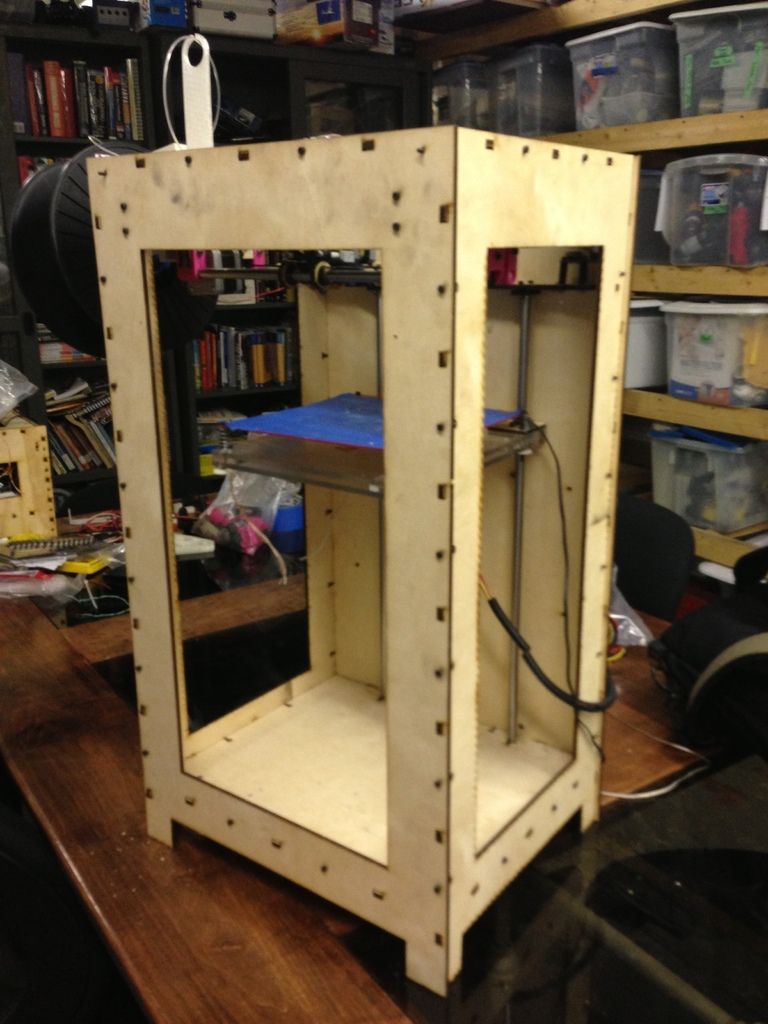 In June 2015, Bold Machines spun off into a separate company. Today, Petis runs Bre & Co., a startup that makes “family jewel-level gifts,” the first of which was a $5,800 watch. Petis avoids publicity. But many former employees express admiration for his assertiveness, determination and visionary. “Without Bre, the company would not have been a milestone in the history of 3D printing,” one of them said. nine0003
In June 2015, Bold Machines spun off into a separate company. Today, Petis runs Bre & Co., a startup that makes “family jewel-level gifts,” the first of which was a $5,800 watch. Petis avoids publicity. But many former employees express admiration for his assertiveness, determination and visionary. “Without Bre, the company would not have been a milestone in the history of 3D printing,” one of them said. nine0003
In retrospect, it's easy to criticize MakerBot for misjudging a potential market. Even icons of innovation are not always capable of inventing the future. "MakerBot, it was the first time people knew there was 3D printing," says Hartman, one of the earliest employees. “It seems to me that this is the essence of success, and at the same time what led to the defeat. She promised a future that is yet to come."
In October, Popis appeared at Syracuse University (USA). At Hendrix Chapel, the university's public gathering space, Petys, still sporting sideburns and dark-rimmed rectangular glasses, told the audience that successful people are those who "show what they can do and do cool stuff.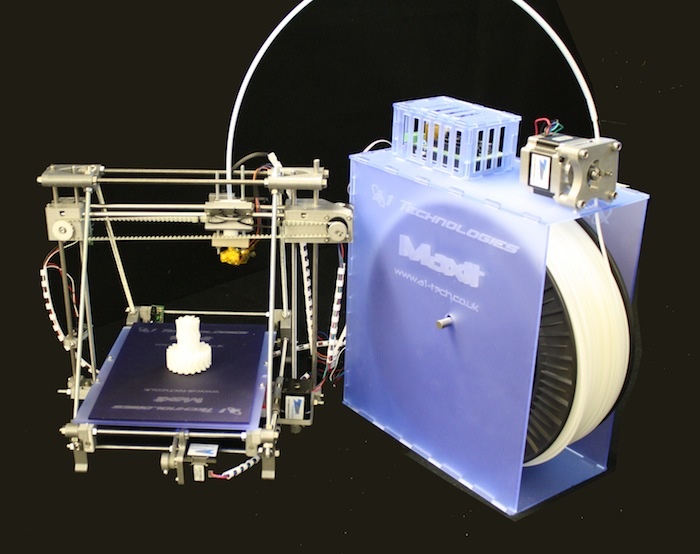 " He was quoting from his polished book of rules of life. These people are members of their own club, he said, and the only requirement to join is to "try to do something amazing." nine0003
" He was quoting from his polished book of rules of life. These people are members of their own club, he said, and the only requirement to join is to "try to do something amazing." nine0003
"If you do something absolutely stupid, absurd, weird, you will almost always find some kind of innovation that matches it in the normal world," he said from the stage.
The first slide that appeared behind him was a frame with the caption "First Steps with the Future."
Answering questions on wanhao
3D printer manufacturer from China since 2011.
From WANHAO 3D printer page:
Thanks to the great efforts of all the members of the WANHAO 3D printer team, WANHAO began shipping overseas 3D printers from August 8, 2012. With 6 months experience in China local retail market, WANHAO has accumulated good experience in 3D printing robot production and after-sales service. Based on this valuable experience and the hard work of our team, we believe that WANHAO can provide more professional service and a more modern affordable 3D printer to amazing people around the world.
nine0003
WANHAO has been manufacturing 3D printers since the beginning of 2011. Several roommates spent all their pocket money and bought one thing - O-Matic from Makerbot. This precious awesome machine brought a lot of enthusiasm for these college students to create 3D projects and helped these buddies make their dream come true. On October 1, WANHAO reproduced Thing-O-Matic and named it DUBLICator NUMBER ONE. This 1st generation 3D printer made in China combined most of the benefits of RepRap and Makerbot and upgraded the extruder to a non-block type. nine0003
In June 2012, WANHAO invented his LCD 3D printer, now called the REPLIATOR TWO. This is a great move that will free up your computer that you don't have to type while your computer is running. Just a simple SD card will do the rest of the work.
- Print is not laminated correctly at a certain height I have a Wanhao i3 duplicator. I've made many great prints with this printer and have found from my own experience that it can produce nearly flawless prints.
 But..... In…
But..... In… - OctoPrint won't heat up hotend/extruder My OctPrint and Monoprice Maker Select IIIP (Wanhao i3 duplicator Plus clone) worked fine, but all of a sudden today the hotend doesn't heat up anymore. I tried to disable the OctoPrint USB port and reset...
- Wanhao i3 duplicator ceramic ribbon replacement I need a new ceramic ribbon for my 3D printer. Does it matter what I get? Can I just buy the cheapest one? Is there a difference in quality? nine0238
- How do I calibrate the temperature of my hot end? I'm using Monoprice Maker Select v2 (a Monoprice branded Wanhao i3 duplicator) and would like to calibrate the temperature readings for my hotend. I used a thermal probe on my...
- Wanhao i3 Mini Temperature Offset I am trying to print with PLA on the new Wanhao Duplicator i3 Mini. Under normal temperature conditions (200-210°C), the printer is underextruded and the extruder motor skips, which…
- Update hotend to reach higher temperatures (e.
 g. for PETG) I'm struggling to get my printer up to temperature for modified PETG (I have Fillamentum CPE filament and recommend 255-275°C), currently time I can reach…
g. for PETG) I'm struggling to get my printer up to temperature for modified PETG (I have Fillamentum CPE filament and recommend 255-275°C), currently time I can reach… - Monoprice Maker (Wanhao Duplicator Clone) Intermittent Underextrusion I have had Monoprice Maker (Wanhao Duplicator Clone) for about a year and a half now. I type in a closed chamber and have had a lot of issues with this in the past (all sorts of random issues) that I…
- Consistent smearing and gaps in print towards the right side Question: I have a problem with some clumps and spaces consistently in the same areas. The left edge is always good, the right edge is very bad (especially around the corner), and the front and back...
- Is there a way to remap the pins so that the Z axis is output through the extruder driver? I have a Wanhao i3 duplicator from which I blew a Z-axis stepper motor. I would like to be able to have all three axes of motion for another project.
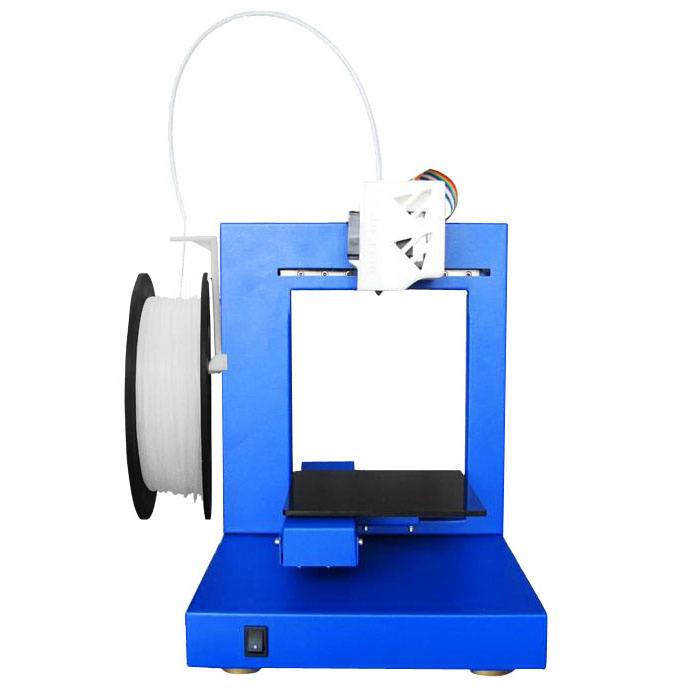 I am trying to see if there is an easy way,…
I am trying to see if there is an easy way,… - Wanhao Duplicator i3 Mini - Doesn't reach temperature -> screen freezes I'm having some problems with my Cocoon Create Model Maker/Wanhao Duplicator i3 Mini. The temperature does not rise in the hotend. I'll go to any of the heating functions (start printing,…
- Recommendations for a 3d printer that can print fidget? I'm looking for a cheap 3d printer that can print this: https://www.thingiverse.com/ thing:1307100 and hopefully under US$200 such as Creality Ender 3, Monoprice Select Mini Pro and V2,…
- Assembly plate (PEI on glass) not flat after several months of use? I have a lot of Duplicator 6 branded printers as my ultimate Monoprice about a year and a half ago, 6 months after I got it I decided I hated the buildplate (I had to…
- Adjust Z Axis (Monoprice Maker Select) I have a Monoprice Maker Select v2 and recently upgraded to Anycubic Ultrabase glass plate In Cura the model I am printing is in the middle as shown here: but the printer places.
 ..
.. - Monoprice Maker Ultimate extrudes too much filament at start Bought a Monoprice Maker Ultimate 3D printer today. This is a rebranded Wanhao Duplicator 6 for reference. I am using the default settings for Wanhao Duplicator 6 in Simplify3D. Here…
- Compensating Device for Smaller Extruder Suppose someone has a Monoprice Maker Select and switched from the original brass extruder to a D4 Plus which is slightly smaller (10.6 vs 10.9mm outside diameter). This…
- "Missing" lines on 64x128 LCD after flashing Marlin 1.1.9 on Monoprice Maker Select v2 I successfully flashed Marlin 1.1.9 on a Melzi v3.5 board (stock board for Monoprice Maker Select v2 (v2. 1?, Duplicator Wanhao i3 with white label). Initially after the flash succeeded…
- Resin burns to transparent sheet I recently bought a Kelant s400 LCD DLP 3D printer. I'm using Wanhao resin (green) to print using Wanhao's recommended settings.
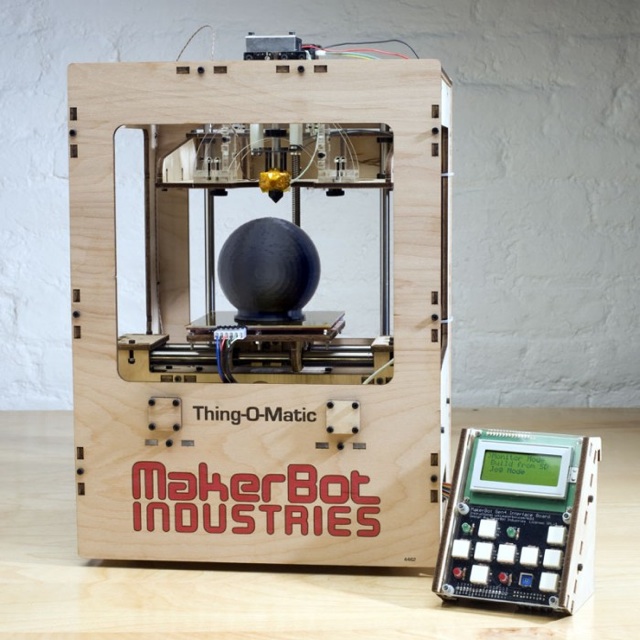 I printed a hollowed out cube as a test and it printed...
I printed a hollowed out cube as a test and it printed... - Wanhao i3 stops printing after about 40 minutes I have a Monoprice Maker Select V2.1 (with new Wanhao Di3 load) with a metal hot end and machined arm and extruder plate. It printed very consistently over several...
- Ultimaker Cura infill problems (weird vertical pillars due to insufficient exhaust) I've spent years debugging this problem, but I can't figure out what I'm doing wrong. I have a Wanhao i3 duplicator (a clone of Prusa i3) and until recently I used an adapted…0238
- Is the Prometheus system compatible with the Wanhao i3 Plus duplicator? I'm trying to figure out if the Wanhao i3 Plus duplicator can be easily expanded to print with two separate filaments using the Prometheus system with DisTech Automation using one hot end...
- Wanhao i3 duplicator plus the temperature is out of control the new Wanhao i3 plus duplicator, which has been printing successfully for several weeks now.
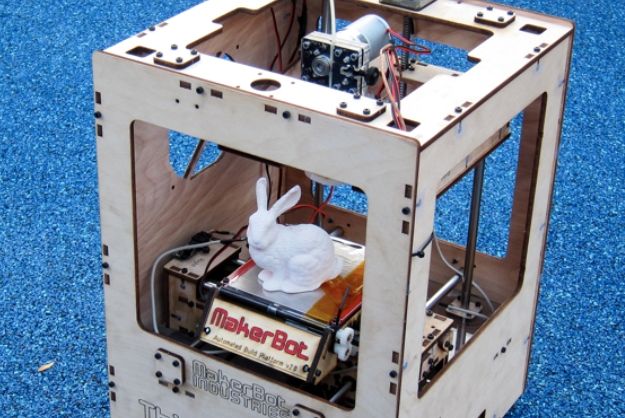 This morning a new error appeared in it. When you press the pre...
This morning a new error appeared in it. When you press the pre... - Can't print on Wanhao Duplicator i3 Mini After unpacking and setting up my brand new Wanhao i3 Mini duplicator, I can't seem to print. When choosing a model for printing, the extruder does not heat up, and the entire printer does nothing, ...
- How to prevent moving parts from sticking together? I'm new to the world of 3D printing and I would appreciate if someone could give me some advice on how to print moving parts in 3D without gluing them together. I recently 3D printed predator pliers…
- Wanhao Duplicator i3 Settings for ABS I am looking for others who have successfully printed in ABS using the Wanhao i3 duplicator. I tried and get a lot of warps and delaminations. I tried to put a big box over the printer, which is a bit...
- Print quality deteriorates after 1.5 hours Testing my new Wanhao i3+. PLA plastic (Wanhao), basic normal quality settings in Cura (I think layer 0.
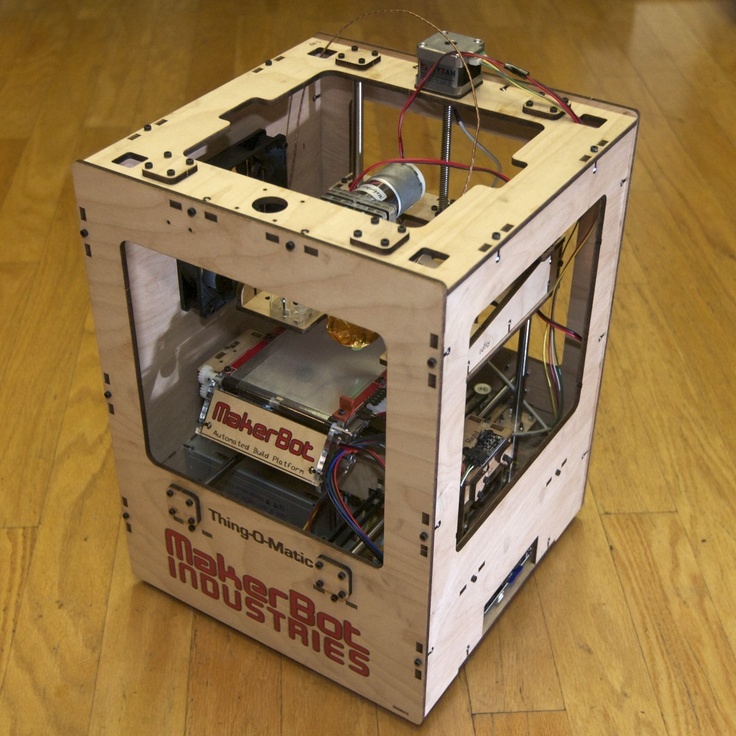 1mm, speed 40mm/s, bed temp 60c, extruder temp 200c). Through…
1mm, speed 40mm/s, bed temp 60c, extruder temp 200c). Through… - Duplicator Wanhao i3 Plus Stuck Extruder I'm new to 3D printing, just got it for Christmas. The filament is stuck somewhere in the extruder of my Wanhao i3 Plus duplicator. I tried to remove it with the supplied hook but without success...
- Extrusion stops during printing I changed the filament (PLA) in my Wanhao I3+ duplicator. I finished my first print attempt when I saw that the "lines" were too thin. I re-sliced with a higher temperature (195°C instead of...
- Regular over-extrusion Can anyone explain to me why I am getting regular over-extrusion patterns on this extrusion calibration cube? Just upgraded extruder from stock to Flexion HT on my Balco…
- Wanhao i3 PLUS restarts on USB plug I just received my Wanhao i3 PLUS duplicator. Everything prints and works fine via the SD card and display, but when connected to my Mac, the printer seems to restart.

Learn more






